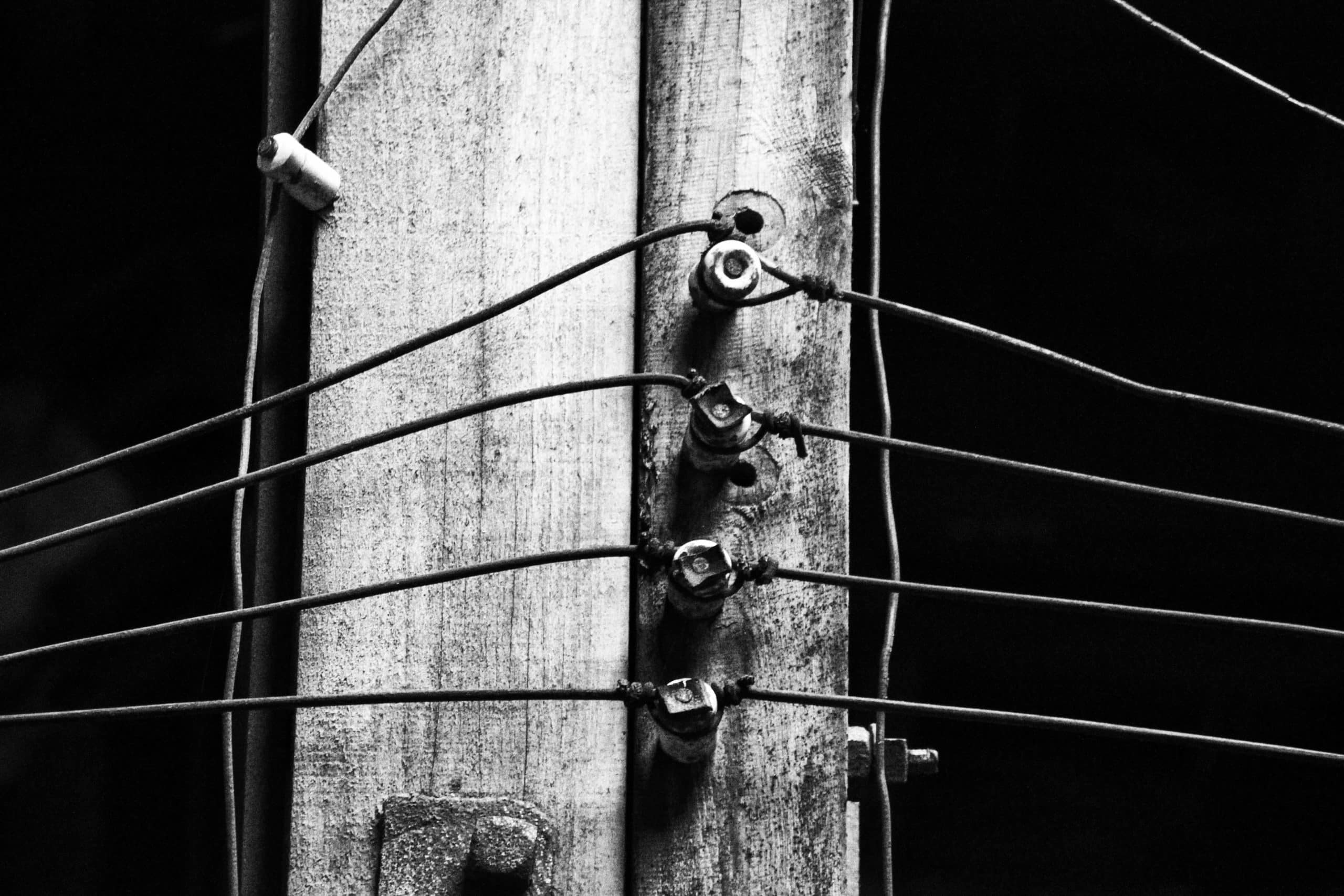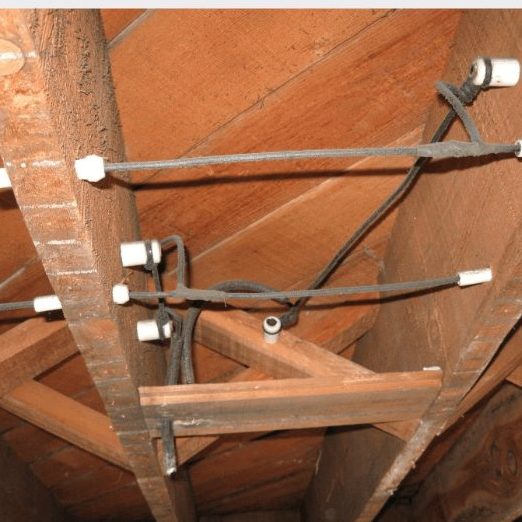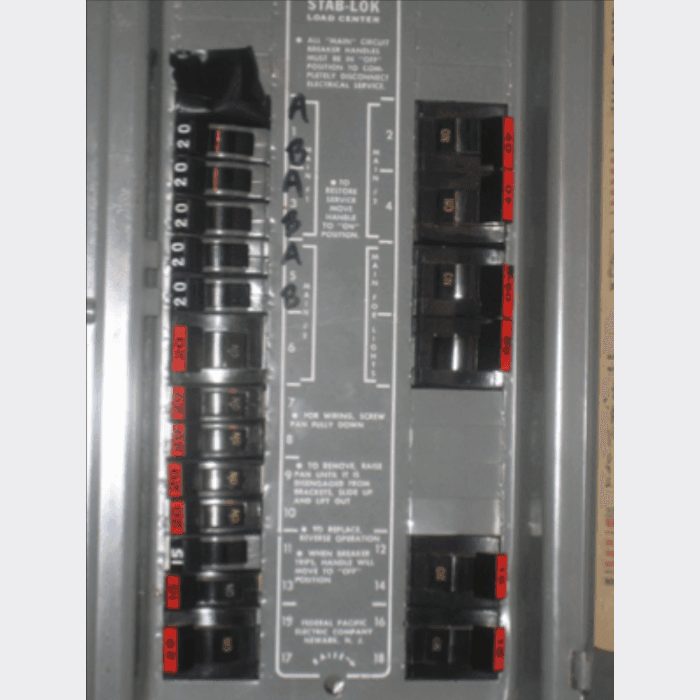
There are all different types of wiring that homes can have and it is important to know what is in your home. Homes built in the 1900s to 1950s may have knob and tube wiring. This is because it was easy and also appliances back then didn’t require as much electricity as appliances were simple.
What is knob and tube wiring and is it safe? Cloth wiring is copper wires which are covered with cloth and rubber insulation in tubes and go through the walls, floor spaces, and attic. There is a porcelain knob that holds it down. Unfortunately, it is not safe and we will take a look at why.
Let’s take a look at why you need to know about knob and tube wiring, why it is dangerous, how to identify it, you find a house that has it, how to fix it, additional changes to make, and when to contact a professional.
Why You Need to Know if Knob and Tube Wiring is Safe
Knob and tube wiring was in homes in the early 1900s to 1950s and is considered dangerous. As mentioned above, it is due to the wiring, the material that surrounds the wiring as well as lack of ground wiring which we will discuss.

Knob and Tube Wiring is Dangerous
It is dangerous because:
- It is Not Grounded – for wiring to be safe, it needs to be grounded. This is because wires that are not grounded have a higher risk of electrocution, causing damage to other devices, and fire. Don’t do this yourself as you don’t want a bootleg ground, as it is illegal. Instead, it needs to be done professionally.
- Insulation- many people covered this wiring with insulation. This is a fire hazard and can cause an electrical fire.
- Cannot be used for three-prong appliances – this is because the amps are not high enough. Considering most appliances are three-pronged, this would limit the appliances that can be used in the home.
- Deterioration- the wires will deteriorate over time due to age and also because they are not made well.
- Improper Modifications– unfortunately, previous homeowners may have tried to fix the knob and tube wiring themselves and created more problems.
Here is a video about what knob and tube wiring looks like:
How to Identify Knob and Tube Wiring in the Home
Since the wiring is in between the walls or in the insulation, the only way you will know if you have it is through a previous home inspection report or having your own home inspection. However, you may be able to see it in attics or crawlspaces. Remember this type of wiring wasn’t used anymore after 1950 so if your home was built after 1950, then you shouldn’t have anything to worry about regarding knob and tube.
What To Do If Knob & Tube Wiring Is In Your Home
The problem is going to be that you won’t be able to qualify for homeowners insurance. This is because companies won’t insure homes with this because of the fire hazard. If you do choose to buy the home and leave in the knob and tube, have a professional look at it to make sure there are no modifications done by a previous homeowner.
Lastly, the knob and tube won’t be able to work in some rooms like kitchens, bathrooms, laundry rooms, or outdoor areas because it is lacking grounding. Also, it won’t work well in rooms with a few large appliances.
How to Fix Knob and Tube Wiring to Make Home Safe
The only way to fix it is through rewiring the home with updated wiring. Unfortunately, this can cost thousands of dollars and will depend on the square footage of the home, where you live, and the difficulty of the installation. If you do rewire the home, then you should be able to get homeowners insurance.
Also, you may want to try to negotiate with the seller about replacing it in the transaction. If you have second thoughts, you can walk away as it is an electrical issue.

Additional Changes
If you decide to rewire the home, you will need to change out the electrical panel. This is especially true if you have an FPE panel, as these were used in homes built in the 1950’s so there may have been some overlap with the knob and tube wiring.
Test the circuit breakers in the box when you rewire. You want to make sure all of them are working and none of them are double tapped. This means that it is meant for one wire but has two going into it.
Replace the old switches and receptacles with ones that are updated and more modern. Two-pronged outlets are never grounded so these will need to be replaced with three-prong. Tamper-resistant outlets are now required in homes so this is a good choice. Also, dimmer switches are great to add for appliances that are from 100-300 watts.
When to Contact a Professional
Contact a professional if you have knob and tube wiring. As mentioned above, it is dangerous and needs to be replaced. Also, if you need to replace the outlets, electrical panels or anything else and need help, that is what a professional is for.
Conclusion
Knob and tube wiring was used in the early to mid-1900s because there was not much demand for appliances with higher wattage. Also, people didn’t know back then how important grounding is and using wiring that is safe and not flammable. It is not safe and needs to be taken out and rewiring is done in the home. We look at the electrical wiring in a home when conducting a home inspection in the Olympia, Lacey, Tacoma, Washington, and surrounding areas. Think you may need our services? Leave us a reply below.



